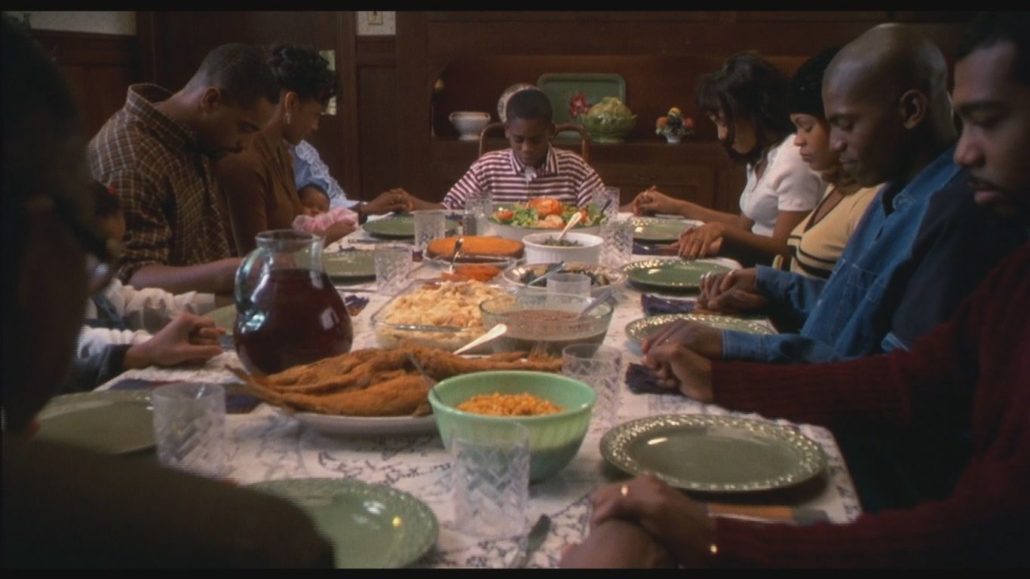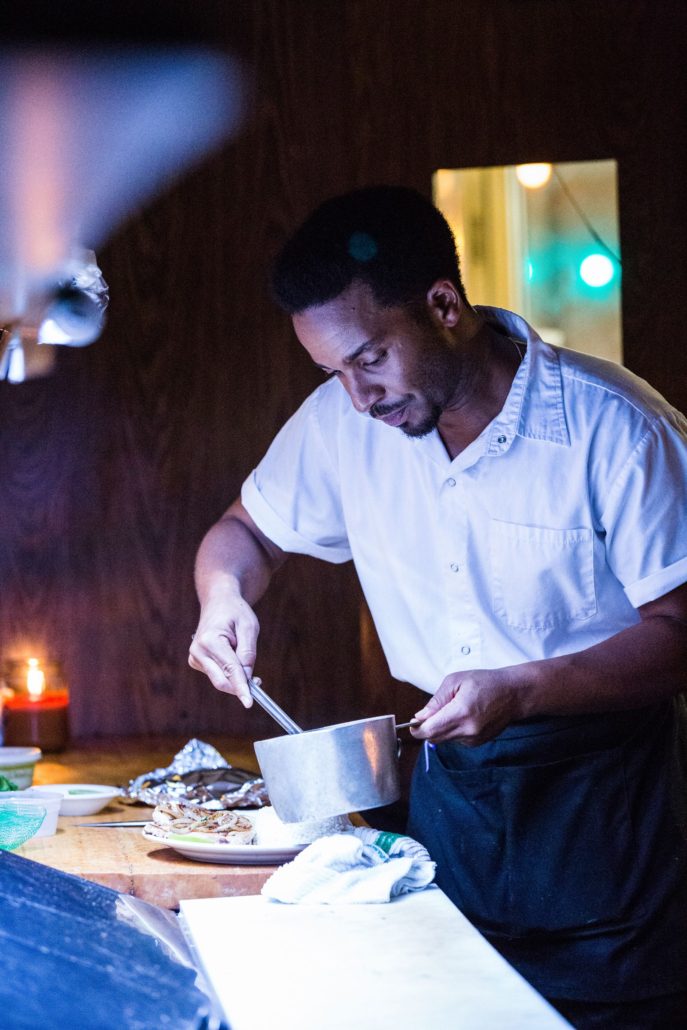Important Food Scenes in Black Cinema

How food enhances movie narratives
More than just its value as nourishment, food plays a significant role in cultures around the world. Holidays and celebrations are centered around food. Recipes are passed from generation to generation. People have pride in their regional cuisines. Take for example the beloved West African Jollof rice dish or the sacred sauce recipes passed down from Italian families. What we eat and how we prepare food are woven into our identities as people. Because of its universal value, food can be used to bring texture to storytelling in movies by filling in the important details that the narrative can’t say.
Whether we realize it or not, the food showcased in films gives important context to the characters and story. It helps ground the characters in reality. It helps to enhance the story’s narrative. And it gives movie-goers a chance to see delicious foods from other cultures. Here are the different ways food appears in Black cinema and how it enhances the story by directly and indirectly speaking to the audience.
Moonlight (2016)
So few stories center LGBTQIA+ love and even fewer of those stories feature black people. Moonlight is a coming-of-age story that follows the life of Chiron, a black gay man growing up in urban working-class Miami, Florida. One of the most emotionally poignant scenes in the film takes place in a diner where Kevin, Chiron’s friend from childhood and complicated romantic interest, makes him a mouth-watering meal of chicken, rice, and beans. This scene shows how sharing food can be an intimate act. In the kitchen, Kevin works intently plating everything just so, even chopping fresh herbs for garnish. His painstaking preparation of food wordlessly demonstrates the love between the two characters. In an effort to get Chiron to open up, Kevin says “These are grandma rules, your ass eats, your ass speaks.” That nod to familial love also speaks to how it women who are often shown performing this kind of domesticity for their families. Kevin making a plate for Chiron isn’t played as a joke or emasculating, it’s just love, plain and simple.

The Help (2011)
In the movie The Help, food is used as a protest. Set in 1960s Jackson, Mississippi, the film gives a look at the lives of black domestic workers during the civil rights movement. At a time when black people were second-class citizens, a young, white journalist named Eugenia becomes a platform for black women who were hired as help for wealthy white families. Eugenia gets these women to anonymously share their stories of mistreatment at the hands of their white employers. As the stories come to light, tensions rise between the black and white women in the already racially divided community. When Minny is fired and slandered by an angry white woman she uses her famous chocolate pie to retaliate in the best way possible. It’s a satisfying act of revenge against one of the most loathsome characters in the movie. Minny’s “special” chocolate pie serves justice in the most literal way possible. This is an effective warning to not upset the people who make your food.
The Princess and the Frog (2009)
Gumbo, po’boys, crawfish boils, and more, food is central to Louisiana’s identity. Tiana in The Princess and the Frog is a young black woman living in 1920s New Orleans with a passion for cooking and a dream to open her own restaurant. Unfortunately, in the middle of working toward her dream, she’s turned into a frog and takes a dangerous journey through the Louisiana bayou. In true Disney fashion, a love story drives the plot, but the best part of the movie is the deliciously realistic illustrations of traditional Louisiana cuisine. The recipes Tiana makes have a deep Southern Black history but the show stopper is the beignets. Beignets are Cajun fried donuts and a Louisiana delicacy, and they’re Tiana’s specialty. From voodoo to jazz, the movie is so steeped in the vibrant New Orleans Louisiana tradition, the food Tiana prepares is inseparable from the Louisiana identity and adds to the authenticity of the story.
B.A.P.S. (1997)
B.A.P.S. Is a light-hearted comedy about family, fashion, food and class. The story revolves around two Black waitresses, Mickey (Natalie Desselle) and Nisi (Halle Berry), from Georgia whose dream is to open the first-ever hair salon/soul food restaurant. The pair take a trip to Los Angeles for music video tryouts but the women get embroiled in the con of a wealthy elderly white man. With the promise of $10K to help fund their dream, the women ingratiate themselves into the lives of a white family with plenty of comedic culture clashes with bewildered rich white people. In an effort to lift the old man’s spirit, the girls prepare an entire soul food spread for breakfast including a raw egg smoothie. To Mickey and Nisi, food is more than body nourishment. They have a lot of pride in their ability to cook to them it represents comfort, life, enjoyment, family and success. Cooking food offers them an opportunity to build a better life and is a part of how they envision their own success.
Soul Food (1997)
Following a close-knit black family in Chicago, three sisters deal with their straining relationship after the family matriarch falls ill due to complications of diabetes, an illness that is an affliction in the black community (African American adults are 60 percent more likely to be diagnosed with diabetes). The grandmother and her ability to bring the family together with weekly family dinners is the center point of the movie as well as the lives of the characters. Soul Food shows how important the meal was literally for the soul of the family. The term soul food carries a lot of meaning in the black community. It’s the food that makes you feel full and nourished, it’s filled with warmth and love, and most importantly it’s the type of food you eat when you’re not counting calories. The movie Soul Food is a story about the value of the connections made around the dinner table and what happens when those connections fade.
